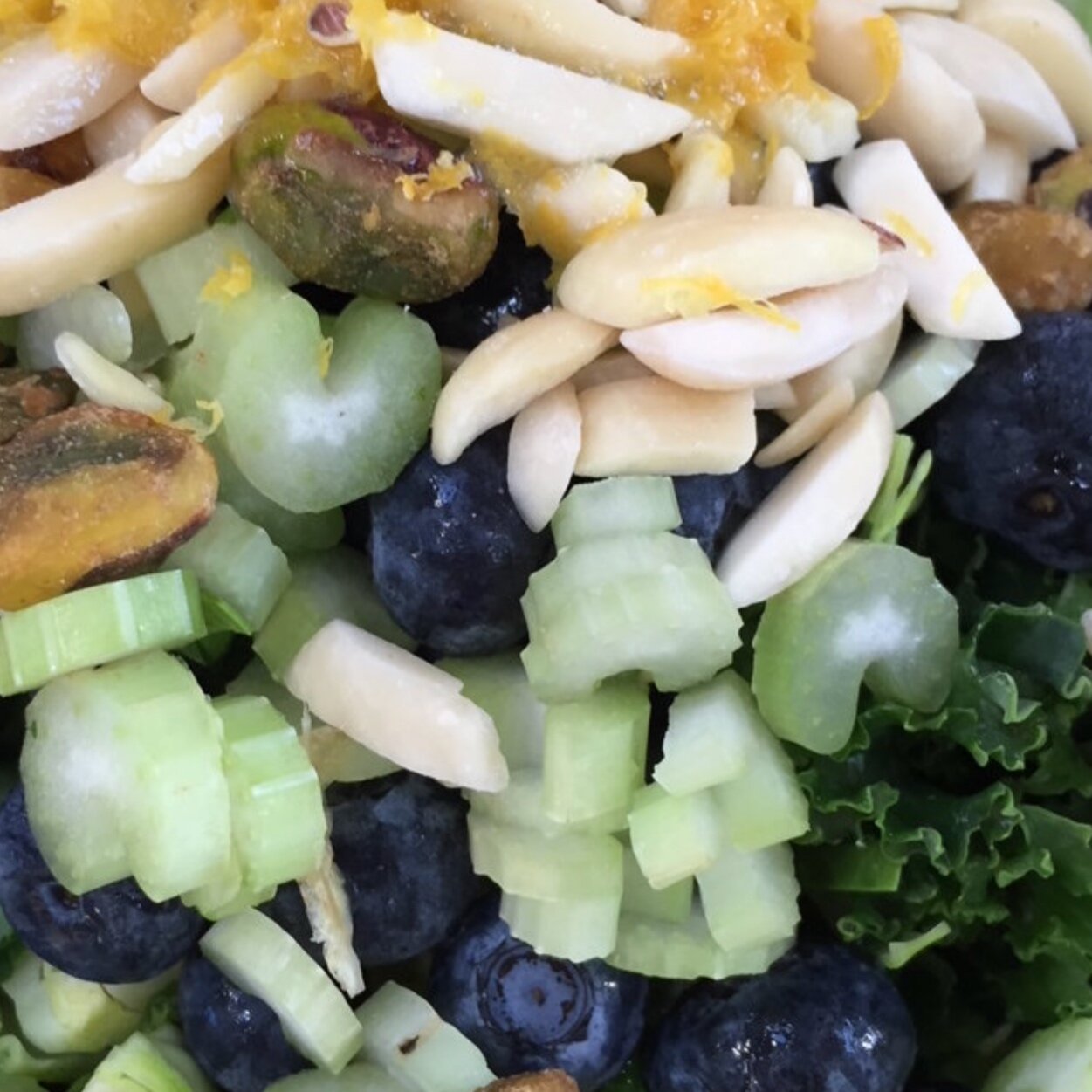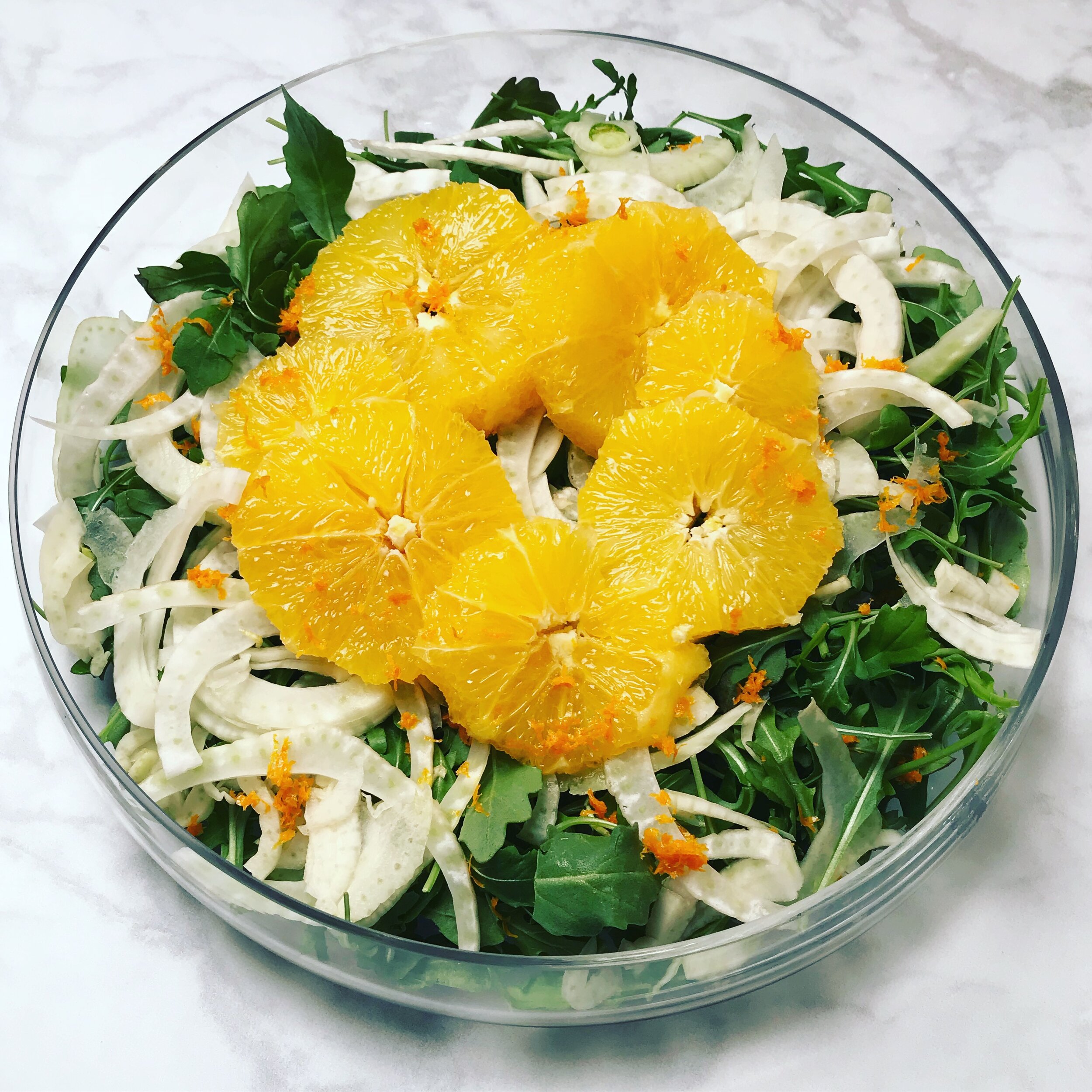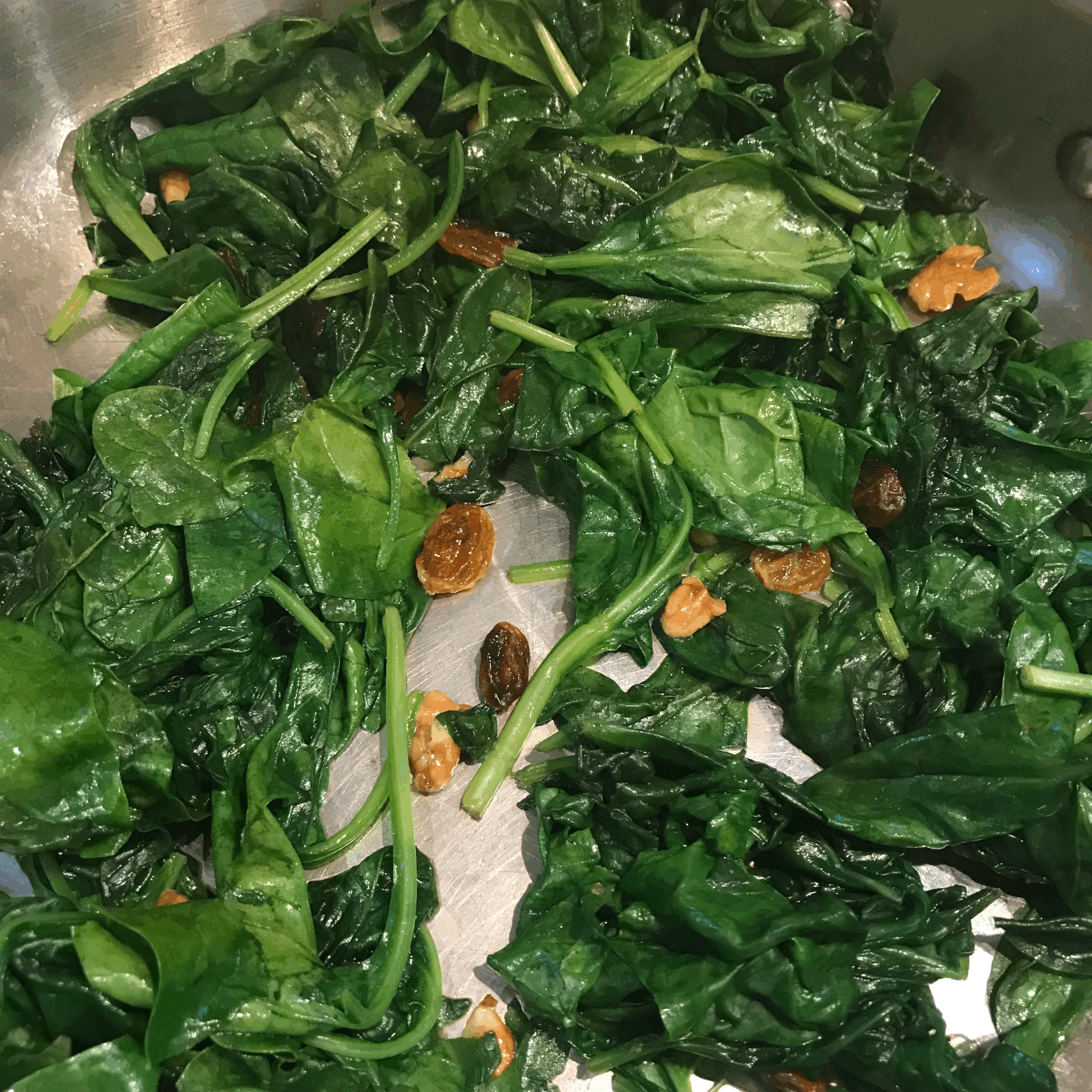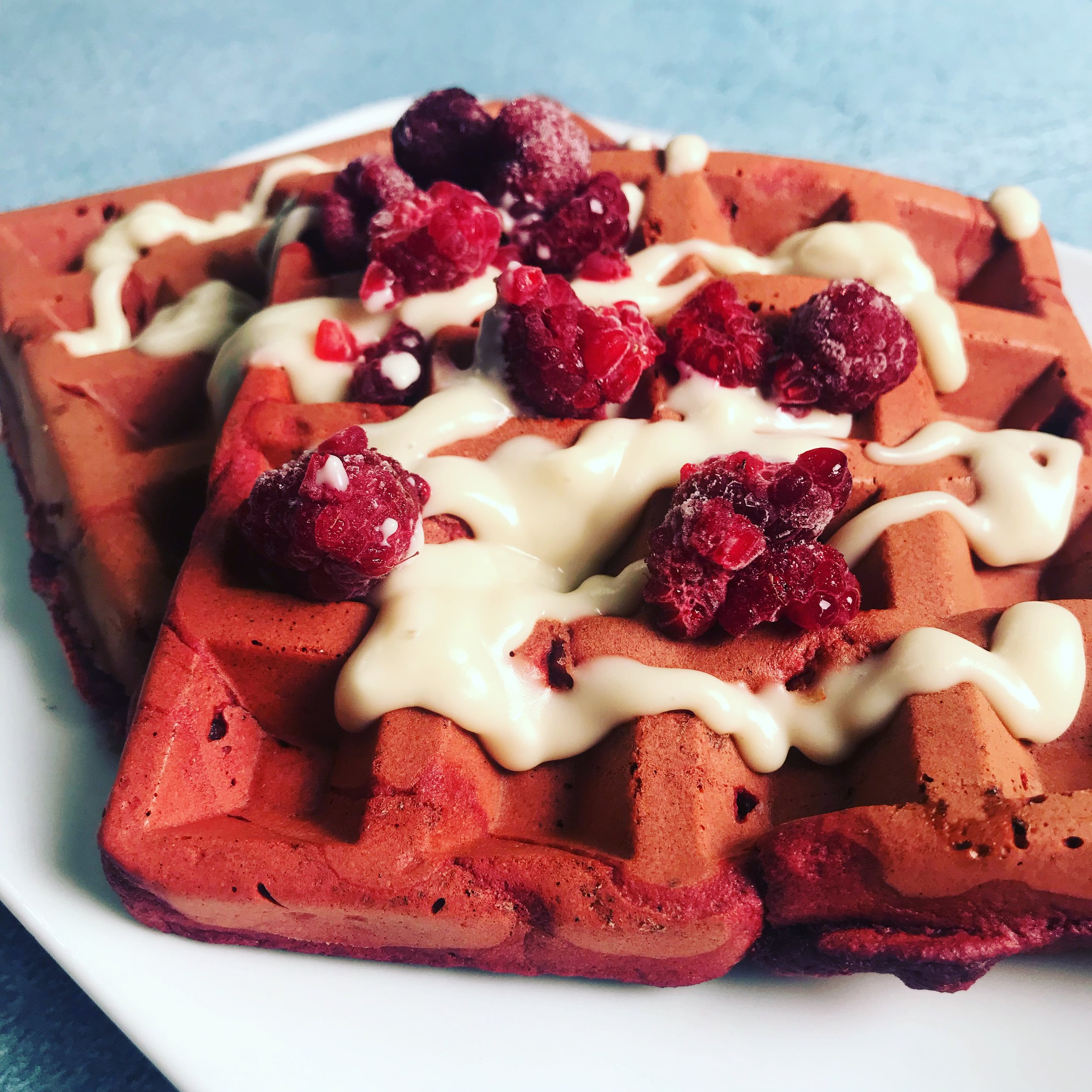
BLOG: NEWS, RECIPES AND ARTICLES
6 side dishes for lower blood pressure and improved cardiovascular health
This February marks the 59th annual American Heart Month. This long tradition helps educate people about cardiovascular disease and promotes longer, healthier lives. Despite this wonderful tradition and progress, heart disease remains the single largest health threat to Americans. This month I invite you to learn more about this amazing organ system and then give it some extra TLC with common ingredients from your kitchen.
This February marks the 59th annual American Heart Month. This long tradition helps educate people about cardiovascular disease and promotes longer, healthier lives. Despite this wonderful tradition and progress, heart disease remains the single largest health threat to Americans. This month I invite you to learn more about this amazing organ system and then give it some extra TLC with common ingredients from your kitchen.
What is the endothelium?
From a big picture perspective, our cardiovascular system is composed of our heart and a complex system of vessels. At a microscopic level, these vessels are lined with a thin layer of specialized tissues called endothelial cells. This cell layer acts as the interface between the blood and underlying vascular tissue. Endothelial cells respond to moment-to-moment changes in blood flow and blood pressure. They produce factors like nitric oxide that help the vessel wall vasodilate for increased blood flow. Healthy endothelial function and blood flow are associated with improved vascular health, improved wound healing, healthy inflammation balance and better sport and lifestyle performance. Taking care of our heart includes supporting this delicate and vital tissue.
Nitric oxide (NO), an essential ingredient for healthy endothelium
Nitric oxide (NO) is a molecule that’s produced naturally by your body in the endothelium. Its function is to signal the inner muscles of the blood vessels to relax. This relaxation, or vasodilation, allows blood, nutrients and oxygen to travel to every part of your body and helps control our blood pressure. Nitric oxide levels in the body can be compromised by nutritional deficiencies, smoking, elevated blood sugar, a sedentary lifestyle and advancing age among other factors. Nitric oxide production is dependent on a sufficient supply of nutrients including the amino acid arginine and key micronutrients like folate, vitamin C, and magnesium from the diet. Switching up your diet is one of the best and most effective ways to naturally boost levels of this important molecule.
6 side dishes to Boost Nitric Oxide Levels
Beets and greens in particular are rich in dietary nitrates, which your body can convert to nitric oxide. Several studies have shown that beet consumption can improve nitric oxide levels and blood pressure control. Greens like spinach, arugula, kale, and cabbage are also packed with nitrates which are converted to nitric oxide in the body. Greens come with the added benefit of folate and antioxidants. These are some favorite side dishes at my dinner table:
6 side dishes for lower blood pressure and improved cardiovascular health
This February marks the 57th annual American Heart Month. This long tradition helps educate people about cardiovascular disease and promotes longer, healthier lives. Despite this wonderful tradition and progress, heart disease remains the single largest health threat to Americans. This month I invite you to learn more about this amazing organ system and then give it some extra TLC with common ingredients from your kitchen.
This February marks the 57th annual American Heart Month. This long tradition helps educate people about cardiovascular disease and promotes longer, healthier lives. Despite this wonderful tradition and progress, heart disease remains the single largest health threat to Americans. This month I invite you to learn more about this amazing organ system and then give it some extra TLC with common ingredients from your kitchen.
What is the endothelium?
From a big picture perspective, our cardiovascular system is composed of our heart and a complex system of vessels. At a microscopic level, these vessels are lined with a thin layer of specialized tissues called endothelial cells. This cell layer acts as the interface between the blood and underlying vascular tissue. Endothelial cells respond to moment-to-moment changes in blood flow and blood pressure. They produce factors like nitric oxide that help the vessel wall vasodilate for increased blood flow. Healthy endothelial function and blood flow are associated with improved vascular health, improved wound healing, healthy inflammation balance and better sport and lifestyle performance. Taking care of our heart includes supporting this delicate and vital tissue.
Nitric oxide (NO), an essential ingredient for healthy endothelium
Nitric oxide (NO) is a molecule that’s produced naturally by your body in the endothelium. Its function is to signal the inner muscles of the blood vessels to relax. This relaxation, or vasodilation, allows blood, nutrients and oxygen to travel to every part of your body and helps control our blood pressure. Nitric oxide levels in the body can be compromised by nutritional deficiencies, smoking, elevated blood sugar, a sedentary lifestyle and advancing age among other factors. Nitric oxide production is dependent on a sufficient supply of nutrients including the amino acid arginine and key micronutrients like folate, vitamin C, and magnesium from the diet. Switching up your diet is one of the best and most effective ways to naturally boost levels of this important molecule.
6 side dishes to Boost Nitric Oxide Levels
Beets and greens in particular are rich in dietary nitrates, which your body can convert to nitric oxide. Several studies have shown that beet consumption can improve nitric oxide levels and blood pressure control. Greens like spinach, arugula, kale, and cabbage are also packed with nitrates which are converted to nitric oxide in the body. Greens come with the added benefit of folate and antioxidants. These are some favorite side dishes at my dinner table:
Beet and Lentil Herb Salad
This dish is hearty enough for a winter meal, but it is actually inspired by summer picnics. So you really can enjoy it any season. Lentils are low in calories, rich in iron and folate and an excellent source of vegetarian protein. They are packed with health-promoting polyphenols and fiber that may reduce risk of heart disease and support a healthy gut microbiome.
If you are unaccustomed to eating beans regularly, lentils are an ideal bean variety to introduce to your body. Lentils are among the easier bean varieties to digest among others such as: black-eyed peas, adzuki, anasazi, lentils and mung beans. Slowly increase them in your diet and let your body get acclimated to the increased fiber.
This dish is hearty enough for a winter meal, but it is actually inspired by summer picnics. So you really can enjoy it any season. Lentils are low in calories, rich in iron and folate and an excellent source of vegetarian protein. They are packed with health-promoting polyphenols and fiber that may reduce risk of heart disease and support a healthy gut microbiome.
If you are unaccustomed to eating beans regularly, lentils are an ideal bean variety to introduce to your body. Lentils are among the easier bean varieties to digest among others such as: black-eyed peas, adzuki, anasazi, lentils and mung beans. Slowly increase them in your diet and let your body get acclimated to the increased fiber.
Beet and Lentil Herb Salad
Author: Erica Leazenby, MD
Makes: Approximately 4 cups
Time: 15 minutes (if lentils and beets are prepared)
Ingredients:
3 small prepared beets, diced in 1 cm cubes, about 1 cup (see notes below for beets preparation options)
2 cups cooked lentils (see notes below for lentil preparation options)
3 Tablespoons olive oil
2 Tablespoon lemon juice
½ chopped herbs (like a blend of parsley, basil, mint and/or thyme)
2 Tablespoon diced shallot
½ cup walnuts, raw or toasted
3 cups arugula (3 handfuls)
Salt and pepper to taste
Directions:
Place all ingredients in a large mixing bowl. Toss and season to taste.
Serve with crusty (GF) bread or on a bed of additional greens.
Notes on Preparing Beets and Lentils:
If you are short on time, you can find high quality organic cooked beets and lentils at your grocery store, which makes this salad very easy to put together. If you have additional time, I recommend the following methods for preparing them yourself.
Beets 3 Ways:
1. Instapot- Fill your instapot with approximately 1 inch of water. Place the washed, unpeeled beets in the instapot that has been fitted with a rack. Pressure cook the beets for 15 minutes for small beets or 30 minutes for large beets. Allow the beets to cool before peeling under running water.
2. Boil your beets- Submerge your clean, unpeeled beets in a pot filled with cold water. Bring to a low boil then allow to simmer for 20-40 minutes or until fork tender. Allow the beets to cool then peel.
3. Roast your beets- Pre-heat your oven to 400 degrees. Coat your clean, unpeeled beets with avocado oil or other high smoke point oil. Place on a baking sheet and roast in the oven for 30-50 minutes or until fork tender. Time will vary considerably based on size of the beet. Roasting intensifies the sweetness of beets.
Lentils 2 Ways:
Cooking time may vary depending on the type and size of lentils used. This recipe is based on traditional brown lentils commonly found at the grocery.
1 cup dried lentils = approximately 4 cups cooked
1. Instapot- Rinse your lentils and inspect them for small rocks or impurities. Place the lentils in your instapot with enough water to cover them by 1.5 inches. Add a smashed garlic clove, bay leaf and 2-3 sprigs fresh thyme (1/2 tsp dried) for additional flavor. Cook on high pressure for 7 minutes.
2. Stove top- Prep the lentils as above. Simmer on the stove top with the aromatics for approximately 18-20 minutes or until the lentils are soft but still holding their shape. Drain and use as needed.
*Cooked lentils freeze well. I like to make a big batch and freeze in smaller portions for later use.
(This blog post is not sponsored by any manufacturer. However, at no expense to you, Relish Health may receive a commission on purchases made through an Amazon link.)
Red Velvet Waffles
We love waffles in our house. They are a treat we use to celebrate weekends and holidays. With Valentine’s Day approaching I created this red waffle recipe as a fun way for my kids to start their day. I love all red velvet baked goods, but I work very hard to make sure that all the ingredients in my kitchen come from real foods rather than artificially produced colors made in a lab. Cue the beets!
Red Velvet Gluten-free Waffles
We love waffles in our house. They are a treat we use to celebrate weekends and holidays. With Valentine’s Day approaching I created this red waffle recipe as a fun way for my kids to start their day. I love all red velvet baked goods, but I work very hard to make sure that all the ingredients in my kitchen come from real foods rather than artificially produced colors made in a lab. Cue the beets!
Lucky for us, the brilliant deep red color of beets makes a beautiful food coloring. It has the added benefit of boosting the heart-healthy antioxidants in our waffles as well. The red color of beets comes from the presence of pH-sensitive betalain pigments. While you can use roasted beets or beet powder in this recipe, the raw beets give the best red color. If you use cooked or processed beets your waffle will still be delicious and nutritious, but may end up more brown in color.
These waffles are also grain-free. The mixture of almond flour and cassava flour keeps the waffles light and fluffy. Both of these ingredients can be found easily at places like Whole Foods, Thrive Market or Amazon.
Red Velvet Waffles (Grain and Dairy Free)
Author: Erica Leazenby
Time: 20 Minutes
Makes 4 square waffles:
Ingredients:
1/2 cup almond flour
1/2 cup cassava flour
1 medium raw beet, peeled and quartered
2 eggs
1/4 cup maple syrup
1-3 Tablespoons nut milk (the amount will vary depending on the size of your eggs and beet)
1 Tablespoon coco powder
1/4 teaspoon baking powder
Pinch pink Himalayan salt
Directions:
Pre-heat the waffle iron to medium-high heat per the manufacturer’s instructions. Grease the iron if needed.
Combine all the ingredients in a high speed blender. Blend the mixture until the batter is smooth. Add the nut milk slowly until the batter is a pourable consistency,
Pour the batter into the heated waffle iron using enough batter to cover the surface of the iron. Bake the waffles for several minutes or until the waffles release easily from the iron and are at desired crispness.
For extra decadence, try this vegan cream cheese frosting:
1/4 cup vegan cream cheese (I like Kite Hill brand.)
1 Tablespoon maple syrup
1 teaspoon vanilla
Combine all ingredients until smooth. Serve immediately.
Beet Hummus for Spring
Spring is here. The longer, warmer days are inviting me to work in my garden. The hardy plants I planted in the cool, early season are nearly ready to harvest. Beets and tender greens are among my favorite early crops to enjoy. Beets come in a variety of vibrant colors that will brighten any table this time of year. In the plant world, color is associated with powerful phytonutrients that benefit our health. Beets in particular have fiber and nutrients that can help improve blood pressure, prevent cancer and fight inflammation.
Beet Hummus
Spring is here. The longer, warmer days are inviting me to work in my garden. The hardy plants I planted in the cool, early season are nearly ready to harvest. Beets and tender greens are among my favorite early crops to enjoy. Beets come in a variety of vibrant colors that will brighten any table this time of year. In the plant world, color is associated with powerful phytonutrients that benefit our health. Beets in particular have fiber and nutrients that can help improve blood pressure, prevent cancer and fight inflammation.
Enjoy them alone, or with a drizzle of your favorite balsamic vinegar, or try them as a stunning addition in the hummus recipe below.
Beet Hummus
Hummus is an amazing nutritious and versatile dish. Chickpeas are a great source of protein and fiber while the tahini (sesame seed paste) provides calcium and other minerals. In this variation on the classic hummus, the beets add a sweet hint and pack a powerful anti-oxidant punch. I love to serve this dip with a platter of colorful vegetables.
Author: Erica Leazenby, MD
Time: 15 minutes
4-6 small roasted beets (about 1 can rinsed and well drained)
1 can cooked chickpeas, drained and rinsed*
1 lemon, zest and juice
1/4 cup Tahini plus more to taste
1 large garlic clove
1/2 tsp sea salt plus more to taste
pepper to taste
olive oil to desired consistency (I use approximately 1 Tablespoon)
1. Roughly chop the beets and place them in the food processor.
2. Add all remaining ingredients to the machine with the exception of the olive oil. Allow the machine to run until the mixture is a smooth consistency. This may take several minutes. Stop the mixing occasionally to reincorporate any hummus that is clinging to the edge of the bowl. After the mixture is starting to become smooth, drizzle the olive oil into the food processor while it is running until the desired consistency is reached.
3. Enjoy with veggies, whole wheat pita or gluten-free crackers.
*If you have plenty of time, peeling each chickpea will result in a smoother hummus.












